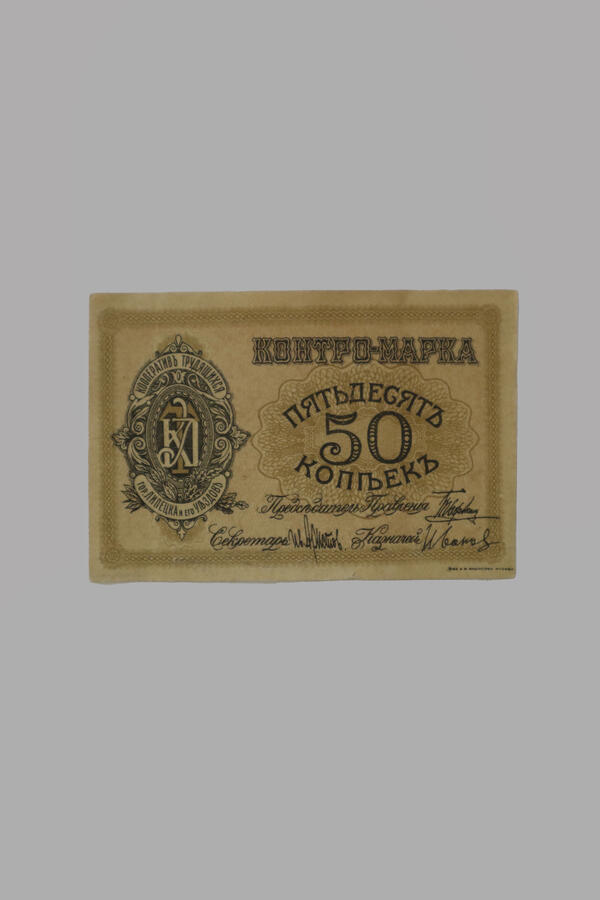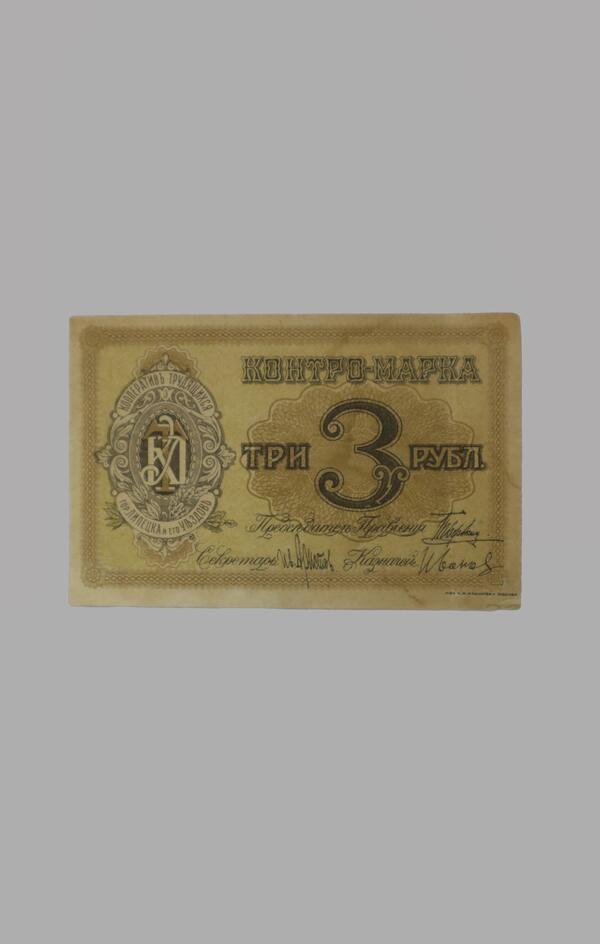After the establishment of Soviet power in the city of Lipetsk and the creation of local institutions of power, the issue of finance became one of the main ones. The situation in Lipetsk, as elsewhere, was difficult, partially due to the lack of banknotes. There was no small change money in circulation.
Coins ended up in the pockets of townspeople and eventually completely disappeared from circulation. All this was the result of the protracted World War I and the revolutionary events in Russia in 1917. While preparations for the monetary reform were underway, it was decided to use old-fashioned money: “Nicholas” credit notes, “Duma” tickets issued in 1917, “kerenki’, as well as stamps. However, due to unrest on the railroad, this money took too long to reach its destination.
At the 2nd Uezd Congress of Soviets in April 1918, the question of finance was readdressed, and the activities of the Lipetsk and Uezd Workers’ Cooperative were discussed. This structure aimed to provide people with the opportunity to purchase products and goods at low “fixed” prices.
Under the circumstances of the “money hunger”, it was the Cooperative of Workers of Lipetsk and its county that issued “bons” (coupons) to distribute goods to its members. Such examples of local spontaneous “money creation” are very rare.
Soon, the Union of Waiters and Cooks also created their own banknotes. The Consumer Society of Employees, Craftsmen and Workers of the Tambov Anonymous Mining and Metallurgical Society, the Soviet Pharmacy Society, the Lipetsk Union of Consumers of the Economy Society, which was engaged in the collection and distribution of food products, had their own coupons.
Of course, those coupons could not solve the main financial problems of the region, but they were certainly valuable for the local population, which was affected by the harsh times of the revolution and the Civil War.
The so-called “Lipetsk bons”, which managed to survive in the museum to the present day, are unique documents of that time period. They helped researchers learn about the region’s history.
Coins ended up in the pockets of townspeople and eventually completely disappeared from circulation. All this was the result of the protracted World War I and the revolutionary events in Russia in 1917. While preparations for the monetary reform were underway, it was decided to use old-fashioned money: “Nicholas” credit notes, “Duma” tickets issued in 1917, “kerenki’, as well as stamps. However, due to unrest on the railroad, this money took too long to reach its destination.
At the 2nd Uezd Congress of Soviets in April 1918, the question of finance was readdressed, and the activities of the Lipetsk and Uezd Workers’ Cooperative were discussed. This structure aimed to provide people with the opportunity to purchase products and goods at low “fixed” prices.
Under the circumstances of the “money hunger”, it was the Cooperative of Workers of Lipetsk and its county that issued “bons” (coupons) to distribute goods to its members. Such examples of local spontaneous “money creation” are very rare.
Soon, the Union of Waiters and Cooks also created their own banknotes. The Consumer Society of Employees, Craftsmen and Workers of the Tambov Anonymous Mining and Metallurgical Society, the Soviet Pharmacy Society, the Lipetsk Union of Consumers of the Economy Society, which was engaged in the collection and distribution of food products, had their own coupons.
Of course, those coupons could not solve the main financial problems of the region, but they were certainly valuable for the local population, which was affected by the harsh times of the revolution and the Civil War.
The so-called “Lipetsk bons”, which managed to survive in the museum to the present day, are unique documents of that time period. They helped researchers learn about the region’s history.





